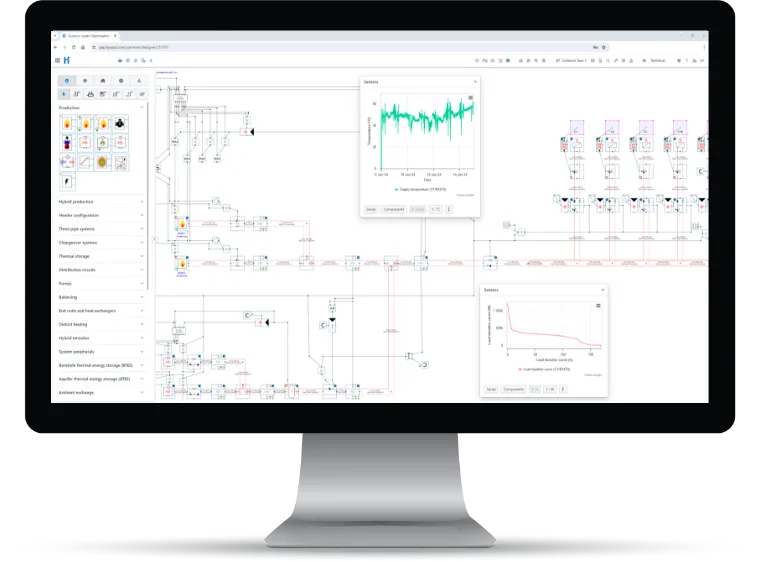The Physics-Based HVAC Engineering Software
The HVAC simulation and calculation software, to streamline your design process and optimise your building's heating and cooling installations. Take actionable steps towards greener zero carbon initiatives.

Deliver optimal HVAC systems while improving your margins
In today's constantly evolving HVAC market, navigating the intricacies of heating and cooling systems can be quite daunting. There is an emerging need for high-efficiency HVAC systems, but at the same time, the complexity of systems is rapidly increasing. At Hysopt, we tackle this exploded complexity with our own innovative physics- and cloud-based software.
By approaching HVAC engineering on a system-level instead of looking at individual components, we empower HVAC Engineers to design and optimise HVAC systems for maximum efficiency and performance. Our cutting-edge software not only enhances system functionality – driving sustainability and cost savings - but also streamlines your overall engineering process.
Experience the difference of system-level thinking with Hysopt, and revolutionise your approach to HVAC engineering to achieve unparalleled results.

By HVAC Engineers, for HVAC Engineers
No compromises on complexity
All complexities involved are considered without burdening the user, even the most thermal and hydraulically intricate systems
Completely tailored to your needs
Developed by in-field experts with expertise spanning 450+ projects, and completely tailored to an HVAC Engineer's needs
Covering the whole engineering chain
Peak performance at every stage of the engineering process, from conceptual to technical design, up until commissioning
Direct access to expert HVAC knowledge
Gain expertise and sharpen your engineering skills through training from experienced and qualified HVAC Engineers
